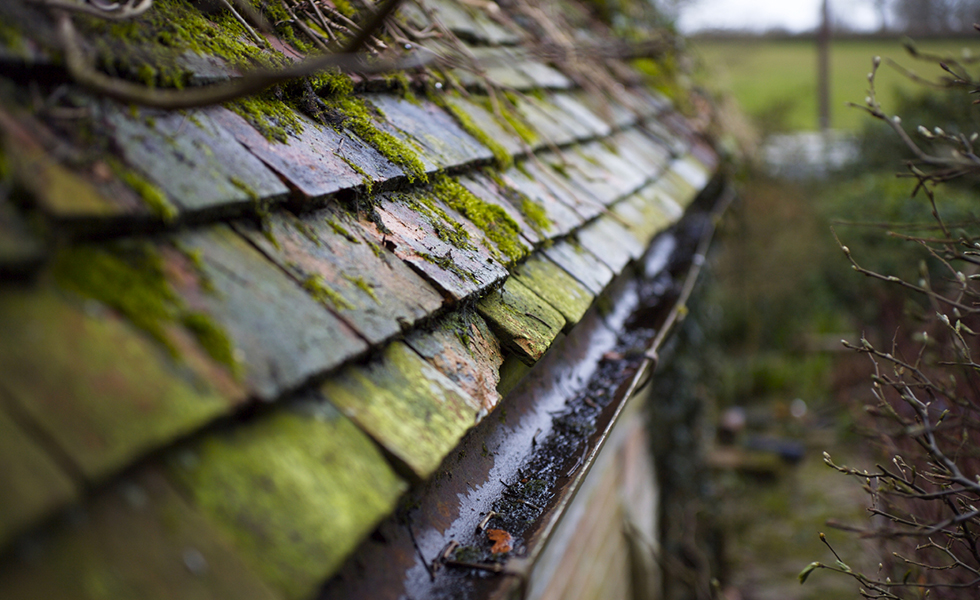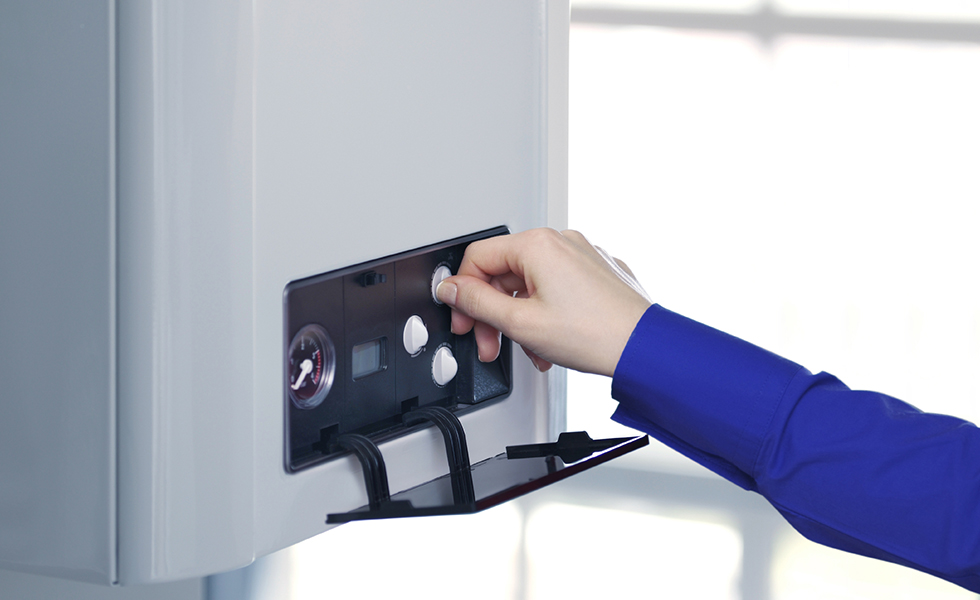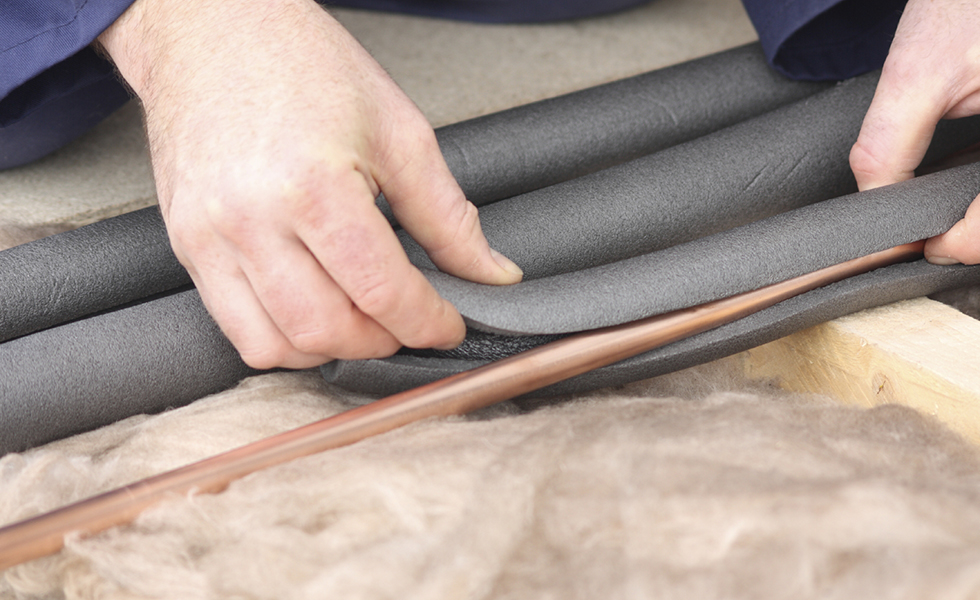Winter home improvements: 11 jobs to prepare your house for the cold months
Prevent potentially costly damage to your property this winter with these simple home maintenance tasks for your house and garden


Home maintenance jobs are a year-round set of task for the home owner, but these winter home improvements are crucial for keeping your home warm, leak-proof, and damage-free once the frosts and heavy rain are here for good. Some of these home improvements are easy maintenance jobs, others are bigger undertakings you'll need to consider if your house is regularly cold.
Find out lots more about house renovation in our dedicated guide.
1. Check your draught-proofing
Seal all doors and windows properly to stop warm air escaping and cold air getting in. Check that existing seals are still in tact and repair any cracks or holes that have formed. For a quick and easy solution, fit doors with draught excluders to keep rooms warm and to prevent energy wastage. Draught proof letterboxes in doors using a proprietary draught excluder, a weighted piece of heavy fabric or a wooden flap.
Fill any gaps in floorboards using string glued into place or proprietary draughtproofing systems. The gaps between the floorboards of an average-sized room can cause a draught equivalent to leaving a small window open.
Find more energy saving ideas and use our guide to restoring and maintaining timber windows.
2. Take care of your heating system
‘It is vital to make sure that your boiler is working properly before winter sets in and the older your boiler, the more inefficient it will be. If you have a pressure gauge, make sure the boiler is at the right pressure and top up as necessary,’ Sheena Anker, engineer at British Gas, advises. Make sure that you service your boiler at least once a year to ensure it is safe to operate. ‘It’s also a good idea to insulate your hot water tank: the materials can be purchased from most DIY stores and help to conserve heat and save you money.’
Check that all radiators and thermostats are working efficiently, and that batteries are replaced for wireless thermostats or other controls when needed.
Get small space home decor ideas, celeb inspiration, DIY tips and more, straight to your inbox!
If your boiler has an external condensate pipe, then make sure it is well insulated. A common cause for boiler failure in winter is a frozen condensate pipe. Follow this advice from Worcester Bosch on how to safely unfreeze a condensate pipe.
Buy an energy monitor or have a smart meter installed by your gas or electricity provider, so that you can keep an eye on energy consumption throughout the year.
Read more about home heating in our essential guide.

3. Clear your gutters
Check gutters and downpipes for debris and leaves and clear regularly to prevent blockages in heavy rain. Doing this simple bit of home maintenance could prevent internal damp from external walls being soaked by leaking gutters.
While clearing gutters check that none are cracked or damaged, and replace if need be. Don't forget to clear gullies at the base of downpipes. Consider installing a gutter brush to stop debris collecting.
4. Secure your home
Research suggests that 56 per cent of burglaries happen at night, with 73 per cent of burglars using doors to enter a property. In three per cent of cases the door is unlocked, according to SafeChoice, so make sure your entrances, such as front, back and side gates are all secured with bolts, and update old or worn front door locks to a multi-point system, which make it far more difficult to force entry. If you have a burglar alarm then now is the time to get it serviced.
Find out more about home security and why you might need smart security cameras.
5. Maintain your property’s exterior
If your home is exposed to the wind, winter rain can be driven into the masonry and potentially lead to damp. Ensure defects such as cracked render, gaps around windows, broken guttering and downpipes and leaking roofs are sealed to prevent water infiltrating the brickwork and plaster.
Also, pay attention to your front door. Does it open and close properly? Does it let in a draught? If you think you need a new one, find out how to choose a new front door in our guide. Bear in mind that if your current door was installed before 2002 and you're also planning on installing home insulation or low-carbon heating, you may be able to get the cost of a new, energy-efficient door covered by the Green Homes Grant.
Find out more about exterior repairs in our guide.

6. Tend to the garden
‘Trim trees and hedges, removing dead or weak branches, to prevent them coming down in windy weather and causing damage to your property,’ says Kevin Byrne, founder of Checkatrade.com. ‘Carrying our basic maintenance tasks now will help to keep your property safe, warm and secure when colder weather arrives.’
Ensure, too, that paths and steps are safe and free of moss and weeds that may make them hazardous and slippery. If freezing weather is forecast, buy de-icing salt or grit from a builders' merchant ready to spread on the paths, and invest in a snow shovel - it can make the job of clearing snow and slush a lot easer than with a conventional shovel.
Find out what more you need to do to prepare your garden for winter.
7. Clean the drains
Few things will spoil your appetite more than having to clear a blocked drain. Soda crystals, available from supermarkets, keep sinks and waste pipes running free, but have a drain plunger on hand in case a blockage occurs.
Regular maintenance of the external drainage system is vital. ‘It’s a good idea to make sure they are clear of debris such as fallen leaves,’ advises Sheena Anker, engineer at British Gas. ‘This involves checking your gullies to ensure that they don’t restrict water flow at any point in the system.’
Lift inspection covers and run water and flush toilets to check drains are flowing properly. If there is sediment in the gully or signs of debris on the side of inspection chambers, use a set of drain rods to push it through from one inspection chamber to the next and flush well with a garden hose. If you suspect a bigger problem then call in a specialist.
8. Insulate your pipes
Burst pipes are a huge issue for UK households during winter months, according to British Gas. To help prevent burst pipes, ensure all pipes are properly insulated by using lagging, which can be bought cheaply from most DIY shops.
Don't forget outside taps and, where possible, turn them off for the winter - there should be an isolation valve inside the house.
Be sure you know where the mains stopcock is in case the worst happens, and test that you can shut it off easily. A little WD-40 should help to loosen it if necessary.
Find out more about home insulation in our guide.

9. Fix broken gates and fences
Taking care of any damaged fencing in the autumn will prevent further breakages during the winter months when strong winds, rain and freezing conditions may exacerbate the problem and cost more to replace.
If your gate is made from iron, find out more about cleaning and repairing railings and gates.
See our gallery of gorgeous garden gates and garden fencing ideas if you need to replace yours.
10. Look after your chimney
If you have an open fire or stove, make sure the outlet for fumes is clear to ensure that the system works effectively. You can do this yourself with a chimney brush or have it swept by a professional chimney sweep. Alternatively, if you have an open fireplace that is not in use, consider using a chimney balloon to fill the void to prevent cold air coming down and lowering the room temperature. Install and test carbon monoxide and smoke alarms.
Find out how to maintain your chimney and fireplace and how to repair a damaged chimney.
11. Refurbish the conservatory if it's too cold

Do you avoid your conservatory in the winter because it’s too cold? Could this be your new home office? Making changes to your old conservatory can vastly reduce the amount of heat lost and make the space welcoming and usable all year round.
Older conservatories are often made with plastic polycarbonate roofs which have very little thermal insulation. Replacing the roof with high performance glass, a solid roof or a combination of the two, is one of the most effective improvements you can make to increase a conservatory’s thermal efficiency, which not just affects the conservatory but the whole home's thermal efficiency.*
*Tip provided by Stormclad
More winter warmers:
- Underfloor heating: a complete guide
- The best smart thermostats
- The best wood-burning stoves to buy now

Lucy is Global Editor-in-Chief of Homes & Gardens having worked on numerous interiors and property titles. She was founding Editor of Channel 4’s 4Homes magazine, was Associate Editor at Ideal Home, before becoming Editor-in-Chief of Realhomes.com in 2018 then moving to Homes & Gardens in 2021. She has also written for Huffington Post, AOL, UKTV, MSN, House Beautiful, Good Homes, and many women’s titles. Find her writing about everything from buying and selling property, self build, DIY, design and consumer issues to gardening.